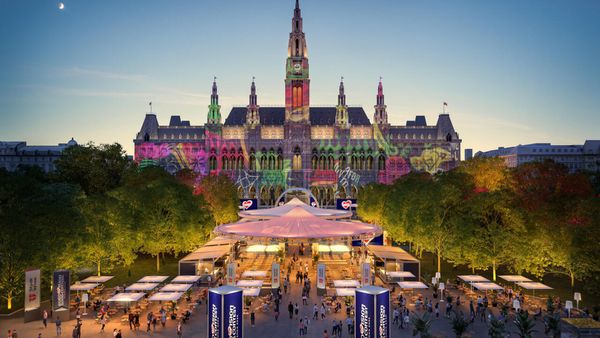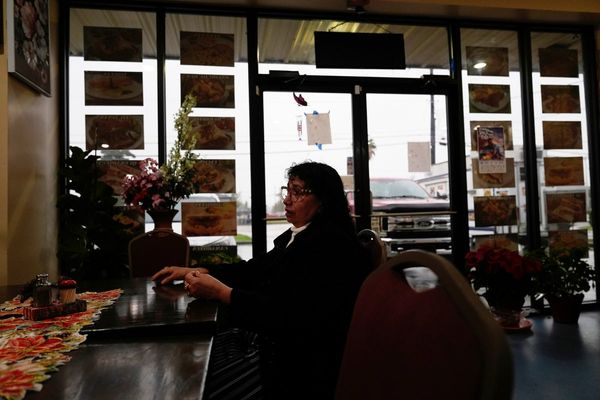
Forty years after the Rainbow Warrior bombing, Greenpeace International’s executive director Mads Christensen says the attack only made the movement stronger and proved that “you can’t sink a rainbow”. He tells RFI how one act of violence inspired generations of activists and continues to fuel their fight for the planet.
RFI: What did the bombing of the Rainbow Warrior mean for you personally?
MC: It’s something I remember very clearly. In 1985, I was in my sixth grade at school, I was 13 years old. This was a moment that inspired me. It symbolised the courage of a few individuals trying to stop nuclear testing that, even at that young age, I knew was dangerous and an existential threat during the Cold War.
Here was a group of people who crossed the world’s biggest ocean to put a stop to that threat on behalf of all of us. The French nuclear testing in the Mururoa Atoll symbolised that threat. I found it courageous – and unfair and evil to stop that with a bomb that cost the life of a photographer.
RFI: How did the bombing inspire you?
MC: It meant I joined Greenpeace as a supporter at that time. Like many others, I think Greenpeace grew its supporter and donor numbers substantially then. It showed in practice that the French government’s strategy was wrong. It blew wind into the sails of an organisation and a movement instead of silencing it.

RFI: At the time of the Rainbow Warrior bombing, Greenpeace was just 14 years old. What did it mean for the organisation?
MC: It proved what many in Greenpeace said then and still say – first they ignore you, then they laugh at you, then they fight you, then you win. That kind of resistance does not work.
It has the opposite effect. It builds strength. “You can’t sink a rainbow” was the slogan that came out of the bombing. That’s true. It was much more than just a ship that was bombed – they tried to silence a movement and an opposition to nuclear testing in the Pacific. The aftermath showed Greenpeace only grew stronger, as did the wider movement.
RFI: When it became known that the order to bomb the Rainbow Warrior went up to the highest authorities in France, what effect did that have?
MC: When it became known who was behind it, how high it went, when the court looked at it and accountability was finally awarded against the French government, we saw some justice and a backlash against their actions. Hopefully it deterred similar acts in the future.
Forty years after the Rainbow Warrior bombing, activists still under attack
RFI: How did this incident shape Greenpeace’s identity and mission in the years afterwards?
MC: Greenpeace’s mission and identity were there before the bombing too. But it showed that Greenpeace was an effective organisation taken seriously by governments.
As we remember the bombing and the murder of Greenpeace photographer Fernando Pereira 40 years ago, it’s important to remind ourselves why the French government committed such an extreme act of violence. They targeted our ship and the campaign to stop nuclear testing because it was effective. We posed a threat to the French government’s military programme and its colonial power in the Pacific – and they failed to silence us.
They failed to intimidate us. They confirmed that you can’t sink a rainbow. We showed that courage is contagious and Greenpeace only grew stronger as a movement and an organisation afterwards. Our continued success in stopping nuclear testing in the Pacific is proof of that.
That lesson is important now because 40 years on, we are just as effective. Now it’s the fossil fuel industry and billionaires using legal attacks – legal bullying that could threaten Greenpeace’s very existence in the US and beyond. But just like in 1985, we cannot be intimidated and we will not back down.

RFI: How did the incident affect your relationship with governments, especially France?
MC: We saw accountability delivered in the bombing. It was clear this was not a good move by the French government – it backfired massively and damaged France’s reputation. It sent a clear message not only to the French government but to other governments too – that’s not how you fight movements or ideas.
Right now we’ve seen the French government take responsibility for the environment and oceans in the global political arena. For example, their work on the Global Oceans Treaty is remarkable. But like so many other countries they are still failing to take all the steps needed for a sustainable future for all of us.
French Rainbow Warrior bomber breaks 30-year silence
RFI: A North Dakota jury found Greenpeace liable for defamation, ordering it to pay more than 660 million dollars to Energy Transfer for its role in anti-fossil fuel protests. How does this legal attack compare to the bomb attack?
MC: The lesson from 1985 is important now because 40 years later we are just as effective. This time they do not use bombs but armies of lawyers and legal attacks that could threaten Greenpeace’s existence in the US.
Energy Transfer, a multi-billion dollar oil pipeline company, has brought two back-to-back SLAPP suits against Greenpeace International and Greenpeace US after Greenpeace US showed solidarity with the 2016 peaceful indigenous-led protest against the Dakota Access Pipeline. The first case was dismissed in court. Greenpeace organisations continue to defend against the second one, which is ongoing in North Dakota, where a jury awarded 660 million in damages.
This is just one example of many SLAPP suits that organisations, individuals and journalists face as the fossil fuel industry fights to silence dissent.

RFI: Where are you now with this case?
MC: We are fighting it in court. We are appealing it and we’ll see what the appeal court says. We’re also challenging Energy Transfer in a Dutch court, using the strong European anti-SLAPP legislation that exists in the EU, to show this was a clear SLAPP suit. We’re seeking compensation for the costs and harm we’ve suffered due to this completely unfounded case in the US.
Of course we hope to win in the legal sphere, but in the public and moral sense this is a crystal clear example of fossil fuel giants trying to silence opposition.
RFI: Forty years after the incident, what message do you have for young activists fighting climate change?
MC: Keep fighting. The bombing in 1985 showed exactly that – first they ignore you, then they laugh at you, then they fight you, then you win. Be mindful these fights can take a long time. This was a fight we won in 1996 when France stopped all nuclear testing and has not resumed since. So we can win the difficult fights too.







